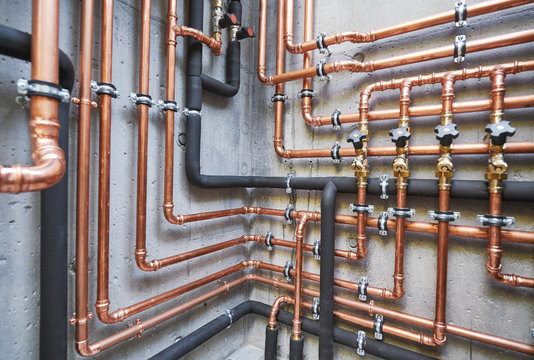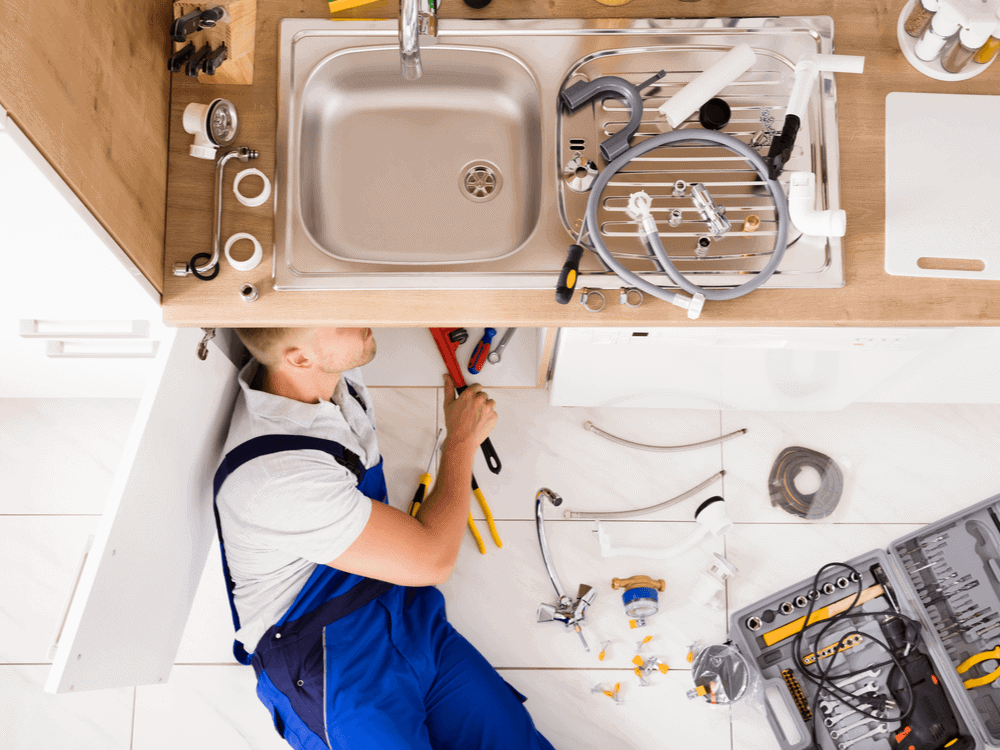The Anatomy of Your House's Plumbing System Explained
The Anatomy of Your House's Plumbing System Explained
Blog Article
The article which follows in relation to Exploring Your Homes Plumbing Anatomy is exceptionally compelling. Read on and make your own conclusions.

Understanding exactly how your home's plumbing system functions is important for every single homeowner. From providing tidy water for drinking, food preparation, and bathing to safely getting rid of wastewater, a well-kept pipes system is essential for your family members's health and convenience. In this comprehensive guide, we'll discover the intricate network that comprises your home's pipes and deal pointers on upkeep, upgrades, and dealing with usual concerns.
Introduction
Your home's pipes system is more than just a network of pipelines; it's a complex system that ensures you have accessibility to clean water and efficient wastewater elimination. Recognizing its elements and exactly how they collaborate can aid you stop expensive fixings and ensure whatever runs efficiently.
Basic Parts of a Pipes System
Pipelines and Tubing
At the heart of your pipes system are the pipelines and tubes that carry water throughout your home. These can be made from numerous products such as copper, PVC, or PEX, each with its advantages in terms of sturdiness and cost-effectiveness.
Components: Sinks, Toilets, Showers, and so on.
Components like sinks, toilets, showers, and tubs are where water is utilized in your house. Understanding exactly how these components attach to the plumbing system aids in diagnosing issues and planning upgrades.
Valves and Shut-off Factors
Valves regulate the circulation of water in your plumbing system. Shut-off valves are important throughout emergency situations or when you need to make repair work, enabling you to isolate parts of the system without interrupting water flow to the entire home.
Water System
Key Water Line
The main water line links your home to the local water or an exclusive well. It's where water enters your home and is dispersed to numerous components.
Water Meter and Stress Regulatory Authority
The water meter actions your water usage, while a pressure regulator ensures that water moves at a secure stress throughout your home's pipes system, avoiding damage to pipes and fixtures.
Cold Water vs. Warm water Lines
Recognizing the difference in between cold water lines, which provide water straight from the main, and hot water lines, which carry heated water from the water heater, helps in repairing and preparing for upgrades.
Drainage System
Drain Pipes Water Lines and Traps
Drain pipes bring wastewater away from sinks, showers, and commodes to the sewage system or septic system. Traps protect against sewage system gases from entering your home and additionally catch debris that could create obstructions.
Air flow Pipes
Air flow pipelines permit air into the drainage system, stopping suction that might slow down drainage and trigger traps to vacant. Correct air flow is crucial for maintaining the stability of your plumbing system.
Significance of Appropriate Drain
Making certain proper drain protects against back-ups and water damage. On a regular basis cleaning drains and keeping catches can avoid pricey fixings and prolong the life of your pipes system.
Water Furnace
Kinds Of Water Heaters
Water heaters can be tankless or standard tank-style. Tankless heating systems warm water on demand, while containers keep warmed water for instant usage.
Upgrading Your Plumbing System
Factors for Upgrading
Updating to water-efficient fixtures or changing old pipelines can boost water high quality, reduce water bills, and increase the value of your home.
Modern Pipes Technologies and Their Advantages
Check out modern technologies like wise leakage detectors, water-saving toilets, and energy-efficient hot water heater that can save cash and lower environmental influence.
Cost Factors To Consider and ROI
Determine the ahead of time expenses versus long-term financial savings when taking into consideration plumbing upgrades. Many upgrades spend for themselves through lowered utility expenses and fewer fixings.
Exactly How Water Heaters Connect to the Pipes System
Comprehending just how water heaters attach to both the cold water supply and warm water circulation lines helps in detecting problems like not enough hot water or leakages.
Maintenance Tips for Water Heaters
Regularly flushing your hot water heater to remove sediment, inspecting the temperature setups, and inspecting for leaks can expand its lifespan and improve energy performance.
Usual Plumbing Problems
Leakages and Their Causes
Leaks can take place as a result of aging pipes, loose installations, or high water stress. Resolving leaks promptly avoids water damage and mold growth.
Clogs and Obstructions
Blockages in drains and bathrooms are typically triggered by flushing non-flushable items or an accumulation of oil and hair. Using drain screens and being mindful of what goes down your drains pipes can protect against blockages.
Signs of Plumbing Problems to Expect
Low tide stress, slow-moving drains pipes, foul odors, or uncommonly high water expenses are indications of prospective pipes troubles that must be resolved without delay.
Pipes Upkeep Tips
Routine Examinations and Checks
Set up yearly pipes evaluations to catch issues early. Look for signs of leakages, deterioration, or mineral build-up in taps and showerheads.
Do It Yourself Upkeep Tasks
Basic jobs like cleaning faucet aerators, looking for commode leaks using color tablets, or insulating revealed pipes in cold climates can stop major pipes issues.
When to Call a Professional Plumbing Professional
Know when a plumbing concern needs professional know-how. Attempting complex repair services without proper expertise can cause more damages and greater repair work prices.
Tips for Minimizing Water Usage
Straightforward habits like taking care of leaks without delay, taking shorter showers, and running complete tons of laundry and dishes can preserve water and lower your utility expenses.
Eco-Friendly Plumbing Options
Take into consideration sustainable pipes materials like bamboo for floor covering, which is durable and environmentally friendly, or recycled glass for kitchen counters.
Emergency situation Readiness
Steps to Take Throughout a Pipes Emergency
Know where your shut-off shutoffs are located and how to shut off the supply of water in case of a ruptured pipe or significant leak.
Relevance of Having Emergency Calls Helpful
Maintain contact details for regional plumbers or emergency solutions readily available for fast reaction during a pipes situation.
Environmental Effect and Conservation
Water-Saving Fixtures and Home Appliances
Installing low-flow faucets, showerheads, and commodes can substantially lower water usage without compromising efficiency.
DIY Emergency Situation Fixes (When Applicable).
Short-term solutions like making use of duct tape to patch a dripping pipeline or placing a bucket under a leaking tap can minimize damage up until a specialist plumbing gets here.
Conclusion.
Comprehending the composition of your home's pipes system encourages you to keep it properly, saving time and money on repair services. By adhering to regular maintenance routines and remaining notified regarding modern-day pipes technologies, you can ensure your plumbing system operates successfully for several years ahead.
HOW YOUR PLUMBING SYSTEM WORKS
Which Pipes Do What?
Blue lines = fresh water supply entering the building Red lines = hot water supply entering the building Grey lines = pipes carrying waste away from the building and venting pipes carrying gases away from the building (through the roof) YOUR MAIN PLUMBING SYSTEMS
There are two main plumbing systems that support your home s basic plumbing needs one that brings clean water into your home, and one that sends dirty water away from your home. Connected to the toilet, bath, shower, and other faucets in your home, these two systems keep your water flowing in the right directions.
ACCESSING FRESH WATER
Fresh and clean water is brought into your home through the main water supply line . Filtered through one pipe, this water is pressured to flow into the various fixtures in your home at any given time.
This water can be sourced from a well located on your property, a pond or river (mostly cottages), or, as in most cases, from the city s municipal water treatment centre. However, it is important to note that water that is untreated, such as the water siphoned from ponds or rivers, may not be safe to drink. Personal water supplies always need to be treated for hardness and contaminants before consumed.
MUNICIPAL WATER SUPPLIES
Improve taste and odour Remove sediment Eliminate hardness Reduce chlorine COLD WATER SUPPLY VS. HOT WATER SUPPLY
Cold water flows into your home or building through the service line, which then distributes hot or cold water to your fixtures. This line is most commonly run through a central column that runs floor to floor. Hot water runs in short and straight pipes as the longer the pipeline, the more heat that will be lost in the transfer. Having shorter pipes also allows residents to access hot water more quickly.
WASTE WATER SYSTEM
Your wastewater system is divided into two parts pipes that send wastewater away from your home and venting pipes that send sewer gas away from your home. Sewage water travels through pipes that flush the water and waste towards local sewers that are operated and managed by your city or town. Most sewer systems rely on gravity to move the wastewater to where it needs to go.
The further away from your toilet or sink, the larger wastewater pipes become. This allows for waste to be disposed of from various parts of your home or business at once without pipe blockages. The angle and flow of these pipes are also essential for keeping your waste pipes clear of build up.
https://harrisplumbing.ca/how-your-home-plumbing-system-works/

I have been very serious about The Inner Workings of Your Home's Plumbing and I'm hoping you enjoyed reading the entire page. Sharing is good. Who knows, you may very well be helping someone out. I truly appreciate reading our article about Exploring Your Homes Plumbing Anatomy.
Call Today Report this page